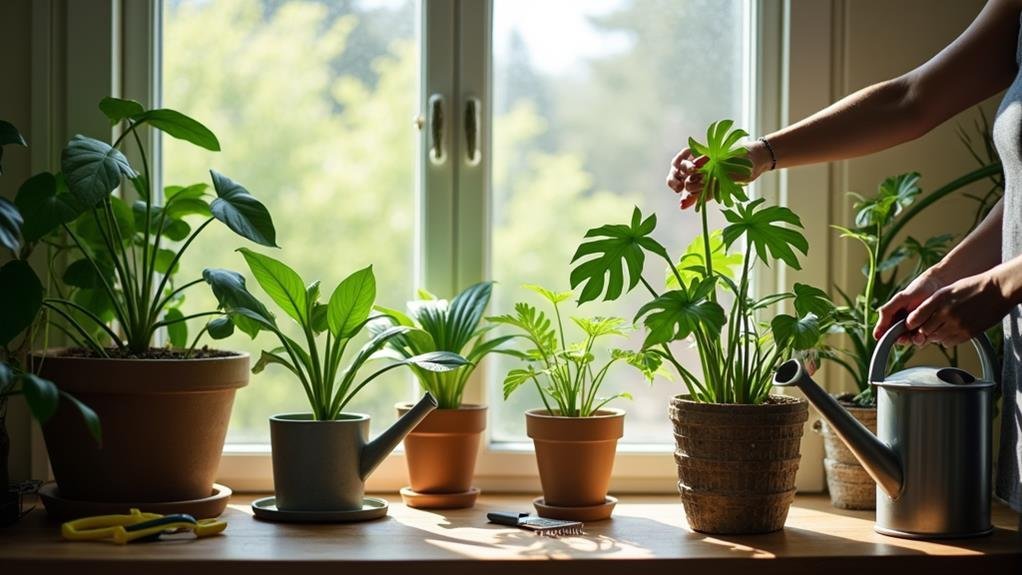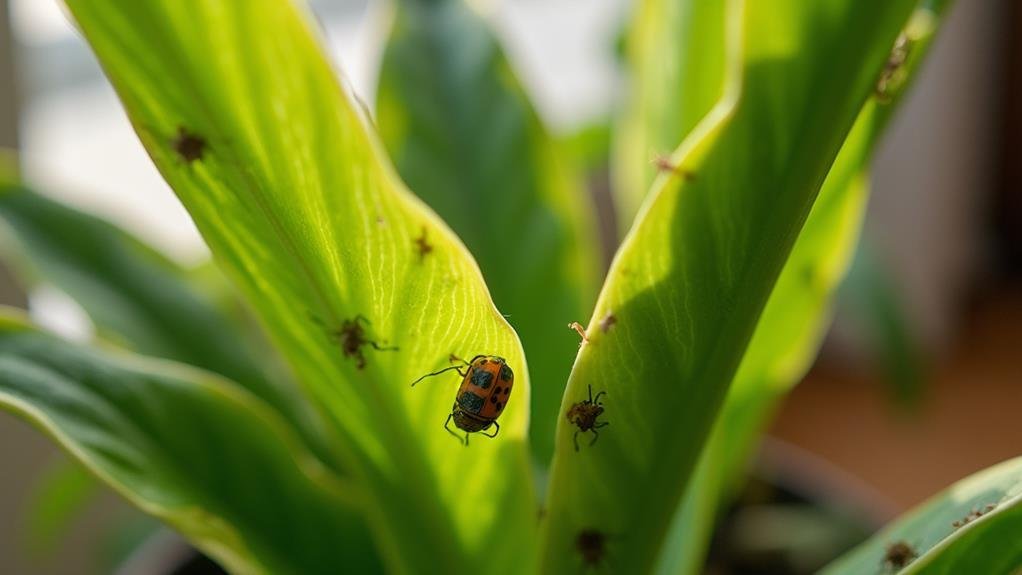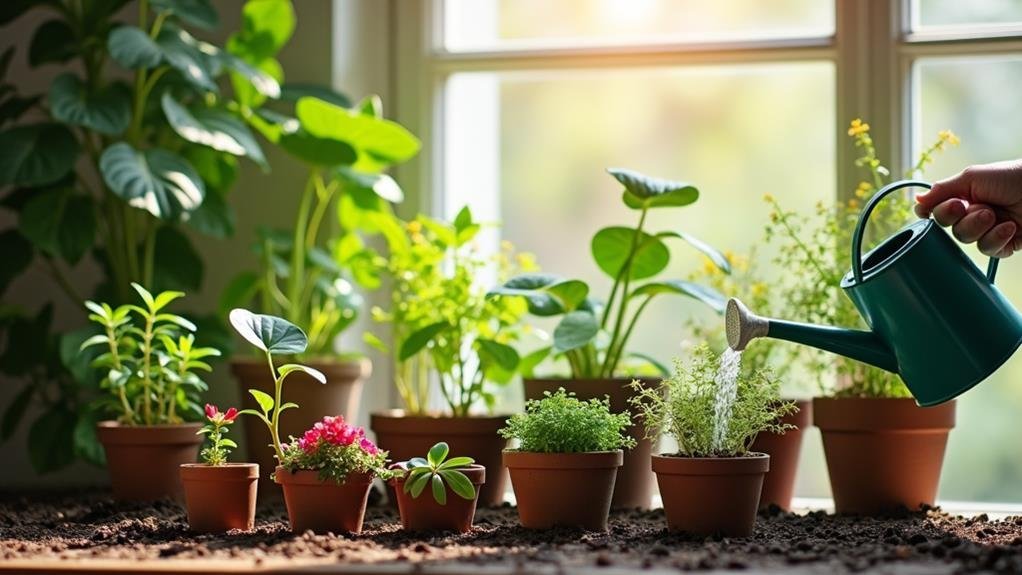If you're just starting your journey into indoor plant care, you might feel overwhelmed by the many choices and tips available. You'll want to begin by selecting the right plants that suit your living space and lifestyle, as this can make a significant difference in your success. Understanding their light requirements is vital, but that's just the beginning. There's much more to learn about watering, soil selection, and maintaining the right environment for your plants. Curious about how to keep your green friends thriving? Let's investigate the essential tips that can help you flourish.
Choose the Right Plants
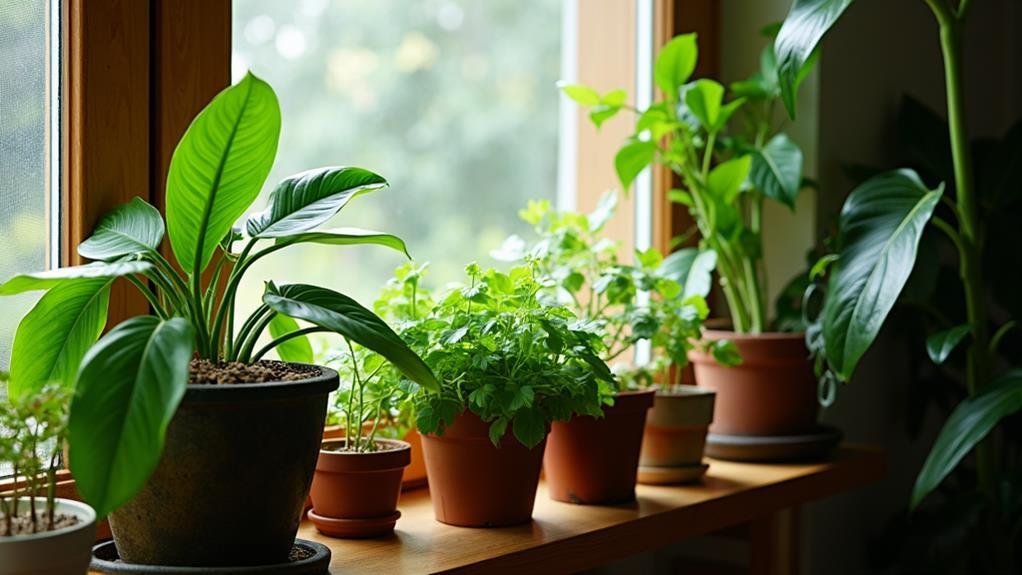
Choosing the right plants for your indoor space can make all the difference in your gardening experience. You'll want to take into account factors like your lifestyle, available space, and personal preferences.
If you travel frequently or have a busy schedule, opt for low-maintenance plants like snake plants or pothos. These resilient varieties don't mind a little neglect and can thrive in less-than-ideal conditions.
Think about the size of your space, too. If you're working with limited room, smaller plants can fit nicely on shelves or tabletops. On the other hand, if you've got ample space, think about adding a statement plant like a fiddle leaf fig or a monstera that can draw attention and create a focal point.
Don't forget about your personal style! Choose plants that resonate with you, whether that's vibrant flowers or lush greenery. You're more likely to enjoy caring for plants that you love.
Finally, take into account the potting options that match your decor. A stylish pot can enhance your plant's appearance, making it a beautiful addition to your home.
Happy plant hunting!
Understand Light Requirements
Understanding the light requirements of your indoor plants is vital for their health and growth. Each plant has specific light needs, which can range from low to bright indirect light.
Start by observing the natural light in your home. South-facing windows typically offer the brightest light, while north-facing windows provide softer illumination.
If you notice your plant stretching toward the light, it's a sign it's not getting enough. Conversely, if the leaves begin to scorch or fade, it might be receiving too much direct sunlight.
To help your plants thrive, consider their origins. Tropical plants often prefer indirect light, while succulents and cacti might enjoy more direct exposure.
You can also rotate your plants occasionally to guarantee they receive even light on all sides. Using sheer curtains can help filter harsh sunlight, creating a more suitable environment for sensitive plants.
If natural light is limited, don't hesitate to invest in grow lights; they can effectively supplement your plants' needs.
Watering Basics
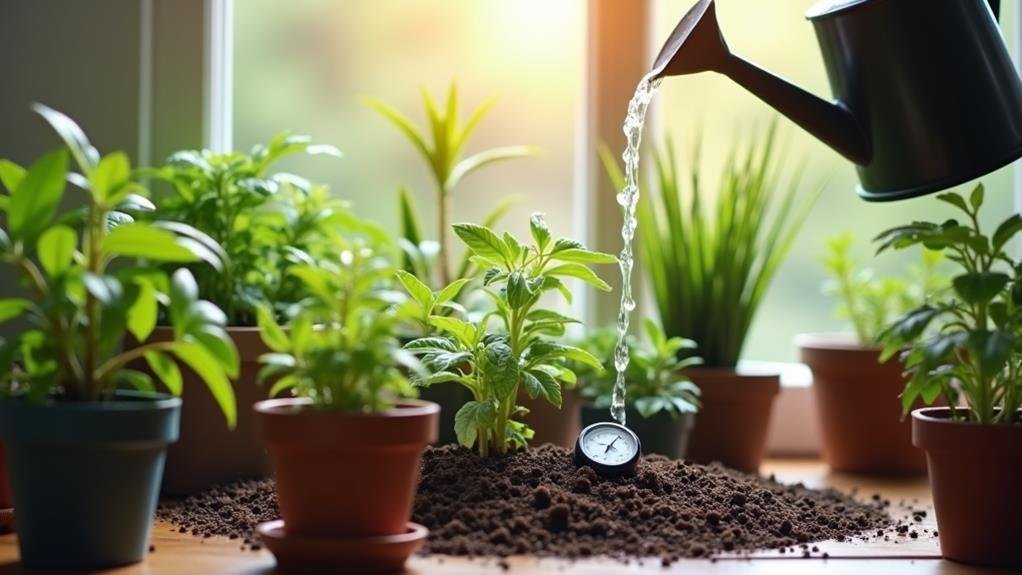
Getting the watering routine right is essential for your indoor plants' health. Too much or too little water can lead to serious issues, like root rot or stunted growth.
Start by checking the moisture level of the soil before watering. Stick your finger about an inch deep into the soil; if it feels dry, it's time to water. If it's still moist, wait a bit longer.
When you do water, make sure you're giving your plants a thorough soak. Water until it drains out of the bottom of the pot, allowing the roots to absorb what they need.
It's better to water deeply and less frequently than to give small amounts every day. This encourages your plants to grow deeper roots, making them healthier in the long run.
Remember that different plants have different needs. Some prefer consistently moist soil, while others thrive when it dries out between waterings.
Always keep an eye on your plants' leaves. Yellowing can indicate overwatering, while wilting might mean they're thirsty.
With a little practice and observation, you'll get the hang of it! Happy watering!
Soil Selection
Selecting the right soil is essential for your indoor plants' success. The soil you choose influences drainage, aeration, and nutrient retention, all vital for healthy growth. Most indoor plants thrive in a well-draining potting mix, which typically contains a combination of peat moss, vermiculite, and perlite. This mix provides the right balance of moisture retention and aeration.
When selecting soil, consider your plant's specific needs. For example, succulents and cacti prefer a sandy mix that drains quickly, while tropical plants benefit from a richer, moisture-retaining blend.
You don't want to use garden soil, as it can compact and harbor pests and diseases.
It's a good idea to check the label if you're buying pre-made potting soil. Look for formulations that mention "for indoor plants" or include specific ingredients tailored to your plant type.
If you're feeling adventurous, you can even mix your own soil to suit your plants' needs.
Humidity and Temperature
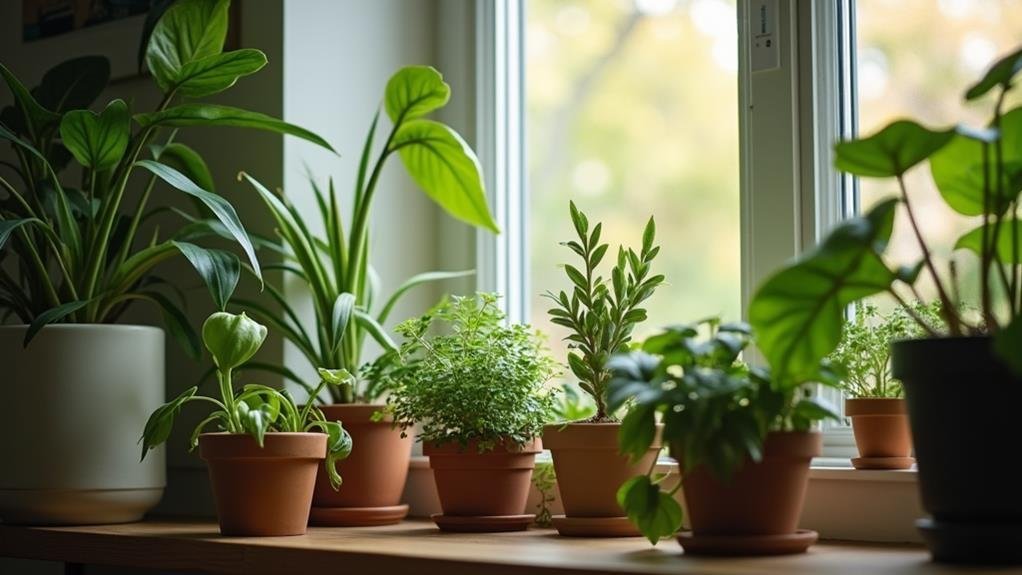
Indoor plants not only need the right soil but also thrive in specific humidity and temperature conditions. Most indoor plants prefer a humidity level between 40% and 60%. If your home is too dry, you may notice the leaves browning or curling.
To combat this, consider using a humidifier or placing a tray of water near your plants. Grouping them together can also create a mini humidity boost, as they release moisture into the air.
Temperature plays a vital role too. Most indoor plants enjoy temperatures between 65°F and 75°F during the day, dropping a bit at night.
Avoid placing your plants near drafty windows or heat sources, as sudden temperature changes can stress them out. If you notice your plant is drooping or its growth has slowed, check whether the temperature is within the ideal range.
Fertilizing Your Plants
Nourishment is crucial for your plants to flourish, and fertilizing plays an important role in this process. To keep your indoor plants healthy, you'll want to provide them with the right nutrients. Start by choosing a balanced fertilizer, ideally one labeled for indoor plants. These typically contain necessary macronutrients like nitrogen, phosphorus, and potassium, along with trace minerals.
When it comes to frequency, most plants benefit from a dose of fertilizer every four to six weeks during the growing season, which is usually spring and summer. For plants that go dormant in the fall and winter, cut back on fertilizing during this time. Over-fertilizing can harm your plants, so always follow the package instructions, and don't hesitate to err on the side of caution.
Before applying fertilizer, water your plants well. This helps prevent root burn and guarantees the nutrients are absorbed effectively. If you're unsure how much to use, keep in mind that less is often more.
Keep an eye on your plants, too; if they look lush and vibrant, you're likely doing it right. Happy fertilizing, and watch your indoor garden thrive!
Common Pest Management
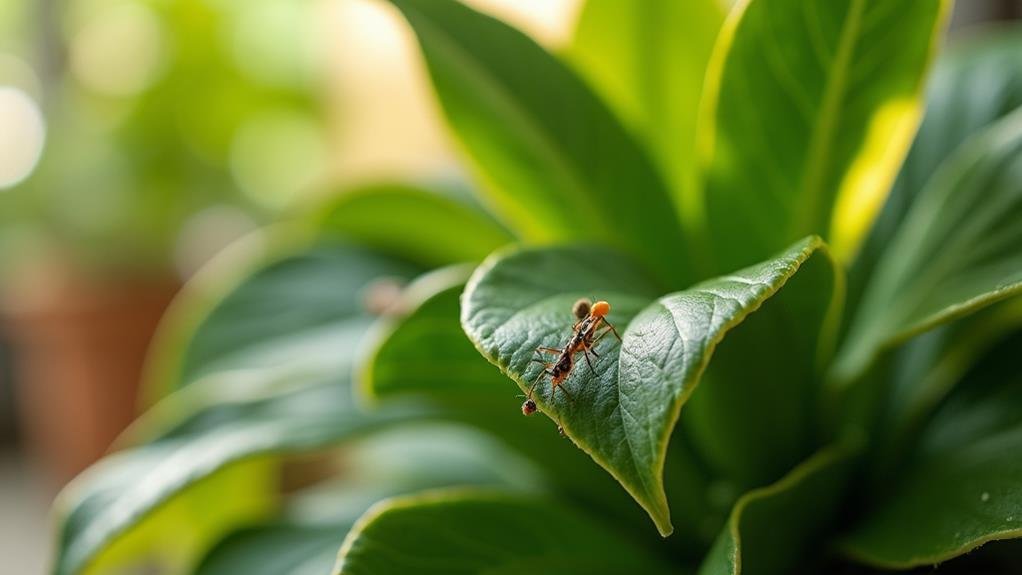
While caring for your plants, it's crucial to keep an eye out for common pests that can threaten their health. Aphids, spider mites, and mealybugs are some frequent intruders. If you spot tiny bugs or sticky residue on your leaves, it's time to act.
Start by inspecting your plants regularly. Catching pests early can save you a lot of headaches later. If you find any, isolate the affected plant to prevent the pests from spreading. You can wash them off with a gentle stream of water or use a soap solution made from mild dish soap and water. Just make sure to test any solution on a small leaf first!
For more stubborn infestations, consider introducing beneficial insects like ladybugs or lacewings. They naturally prey on pests and can help restore balance.
If all else fails, you might need to resort to insecticidal sprays, but always read the label to confirm it's safe for indoor use.
Conclusion
Caring for indoor plants can be a rewarding experience when you follow these essential tips. By choosing the right plants, understanding their light and water needs, selecting proper soil, and maintaining humidity, you're setting yourself up for success. Don't forget to fertilize and keep an eye out for pests. With a little attention and care, your indoor garden will thrive, bringing life and joy to your space. So, roll up your sleeves and enjoy your plant parenting journey!

